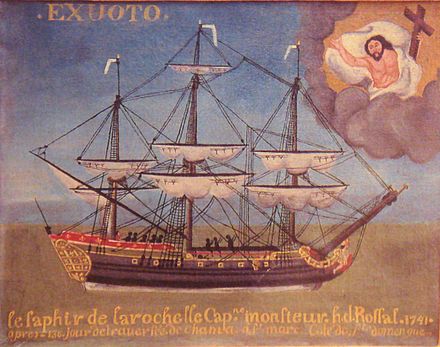|
In the 18thcentury, a total of 6 548 195 Africans children and adults embarked on vessels to be sold as slaves, and a total of 5 654 009 disembarked on the other side. 1 141 059 were destined to be sold to French planters (960 603 made it that far), 2 570 366 for England (and 2 169 659 made it alive) 2 235 417 for Brazil and Portugal (with 1011 417 arriving alive) and 189 342 to the United States. [1] (Note that the United States only existed for the last 21 years of the 18thcentury, so most of the slaves brought to the Americas were in that century were ‘owned’ by Europeans). [1]Numbers obtained from the Transatlantic Slave Trade Database and ‘World Population Growth’ by Max Roser and Estaban Ortiz-Ospina, 2017. Current estimates of slavery in the 21stcentury range from 21 to 40 millions, with the majority of cases being forced to engage in sex labor. These numbers, however, are subject to controversy. The often quoted 27 million was a speculative number arrived at in the 1990s by Kevin Bales. The NGO responsible for the higher figure is Walk Free, who produces an annual Global Slavery Index This number, however, is indicative of ‘modern slavery’ which includes a number of different categories such as bonded labour, forced marriage, child labour, and sex trafficking. These ways of treating human beings, while highly objectionable, do not, however, always constitute slavery. And even if were tempted to redefine slavery, or ‘modern slavery’ to include all of these categories no matter what the circumstances, the numbers would still be unrepresentative when compared to 18thcentury numbers, as forced marriage, child labour, sex trafficking and prison labour were mostly deemed acceptable. (Thanks to Laura Brace for alerting me to the controversy about modern slavery data).
Another way of looking at this is through proportions. There are now 7.5 billion people in the world but less than a billion (0.8) in the 18th century. This means that at worst, the percentage of slaves in this century is just under 1% of the population (which is a huge amount) and at best less than 0.3% (which is still a huge amount). Given the fact that we are comparing ourselves to a century where child labour and forced marriage were very common, it makes more sense to take the lower figure (which may be more accurate). According to the reliable numbers we get from the Transatlantic Slave Trade database, in the 18thcentury, the slave population amounted to 0.8% of the population. But this percentage only takes into account the number of slaves transported in the 18thcentury, and not the number of slaves in a country at any one time. For a more accurate comparison, we would need to know how many were enslaved, taking into account not only survival rates from the transportation but also children born in slavery. So the proportion of slaves to free people was a little higher in the 18thcentury than it is now.
0 Comments
Leave a Reply. |
About
This is where I live blog about my new book project, an intellectual biography of three French Revolutionary women philosophers. Categories
All
Archives
November 2022
|

 RSS Feed
RSS Feed